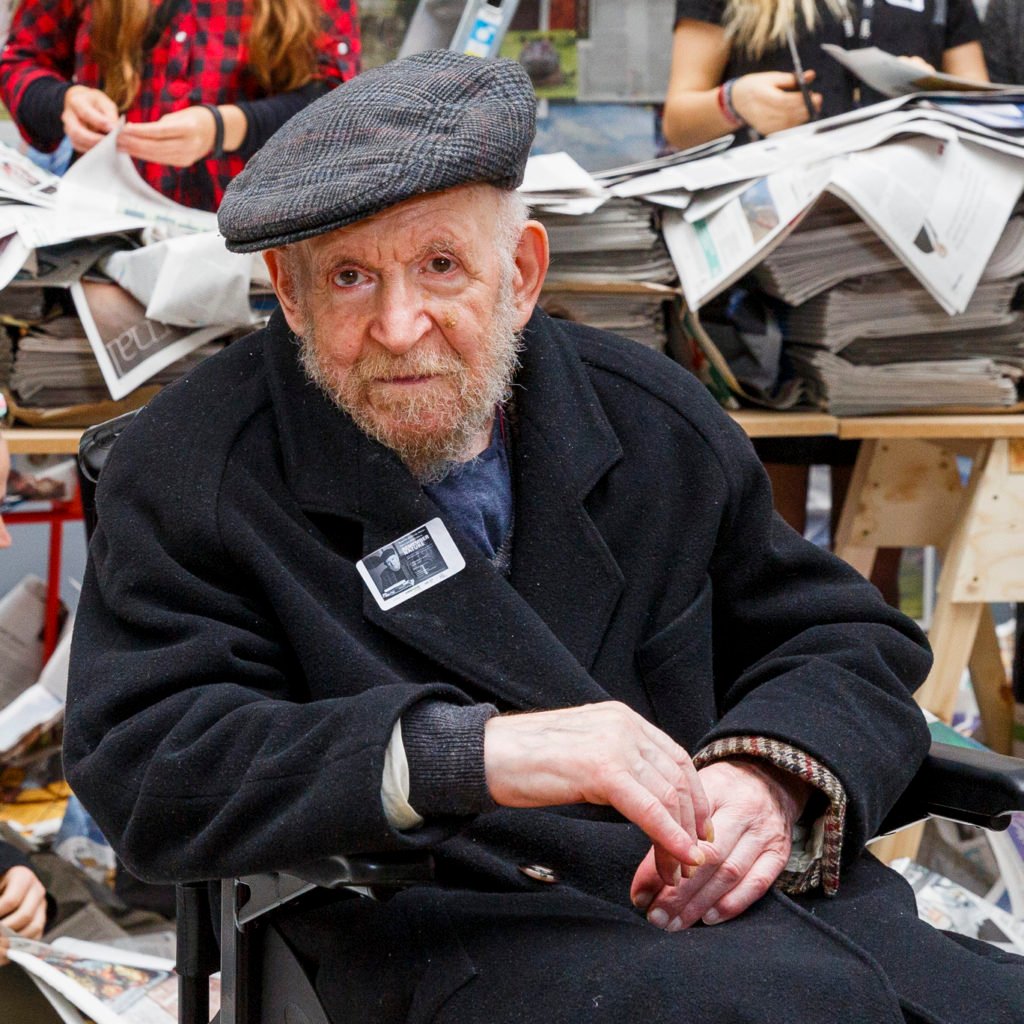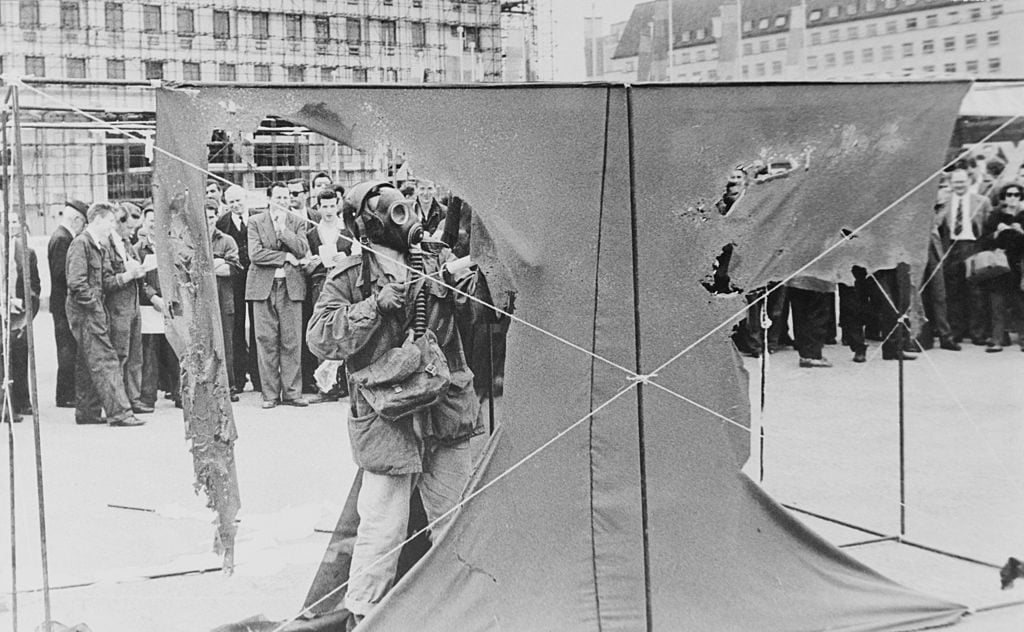People
Gustav Metzger, Influential Artist and Political Activist, Dies Aged 90
Meztger is best known for launching the Auto-Destructive Art movement in 1959.

Meztger is best known for launching the Auto-Destructive Art movement in 1959.

Alyssa Buffenstein

Gustav Metzger, the German artist, activist, and creator of Auto-Destructive Art, died yesterday, March 1, at his home in London, the Guardian reports. He was 90 years old.
Born in Nuremberg in 1926 into a Jewish family, he left Germany for England as a refugee, through the Kindertransport, at the age of 12.
During World War II, he explained in Frieze in 2016, he briefly studied woodwork at a technical college in Leeds, before going to work in a furniture factory. There, a colleague sparked his interest in left-wing politics, and he was involved in anti-nuclear activism and non-violent resistance efforts throughout the 1950s and 60s.
“Facing up to the Nazis and the powers of the Nazi state colored my life as an artist,” he told the Guardian in 2012.
After attending art school at the suggestion of sculptor Henry Moore, in 1959, Metzger developed what would become his signature: Auto-Destructive Art. Anti-capitalist and anti–consumerist, it highlighted the inevitable process of degradation that all objects, even machine-made, face. This was demonstrated in works like a 1960 performance in which the artist spread acid on a sheet of nylon with a paintbrush.

Gustav Metzger demonstrates his ‘Auto-Destructive Art’ at the South Bank, London on July 3, 1961. Photo Keystone/Hulton Archive/Getty Images.
“It was partly me attacking the system of capitalism, but inevitably also the systems of war, the warmongers, and destroying them in a sense symbolically,” Metzger said of his Auto-Destructive works, quoted in the catalog of his 2009 retrospective at London’s Serpentine Gallery, titled “Gustav Metzger: Decades 1959–2009.”
The radical artist was, beginning in 1969, the first editor of the London Computer Art Society’s journal, Page, where he “swung the journal around from technological messianism into recognizing technology as a threat.”
In 1974, Metzger wrote “Years Without Art 1977-1980,” a manifesto calling for artists to cease production and exhibition of their work for three years—in his words, “the minimum period required to cripple the system.” This became influential to later concepts of “Art Strikes.” Indeed, in the early 1980s, the artist withdrew from artmaking for five years, devoting himself to the study of Johannes Vermeer.
His final major work, Remember Nature, was a 2015 project calling for the art world to participate in a day of actions to “ward off extinction.”
The subversive figure was influential on a younger generation of artists, and his ideas even managed to make a mark on pop culture: Pete Townshend of music band The Who was once a student of Metzger’s at the Ealing College of Art, and translated the concept of Auto-destructive art into smashing guitars onstage.